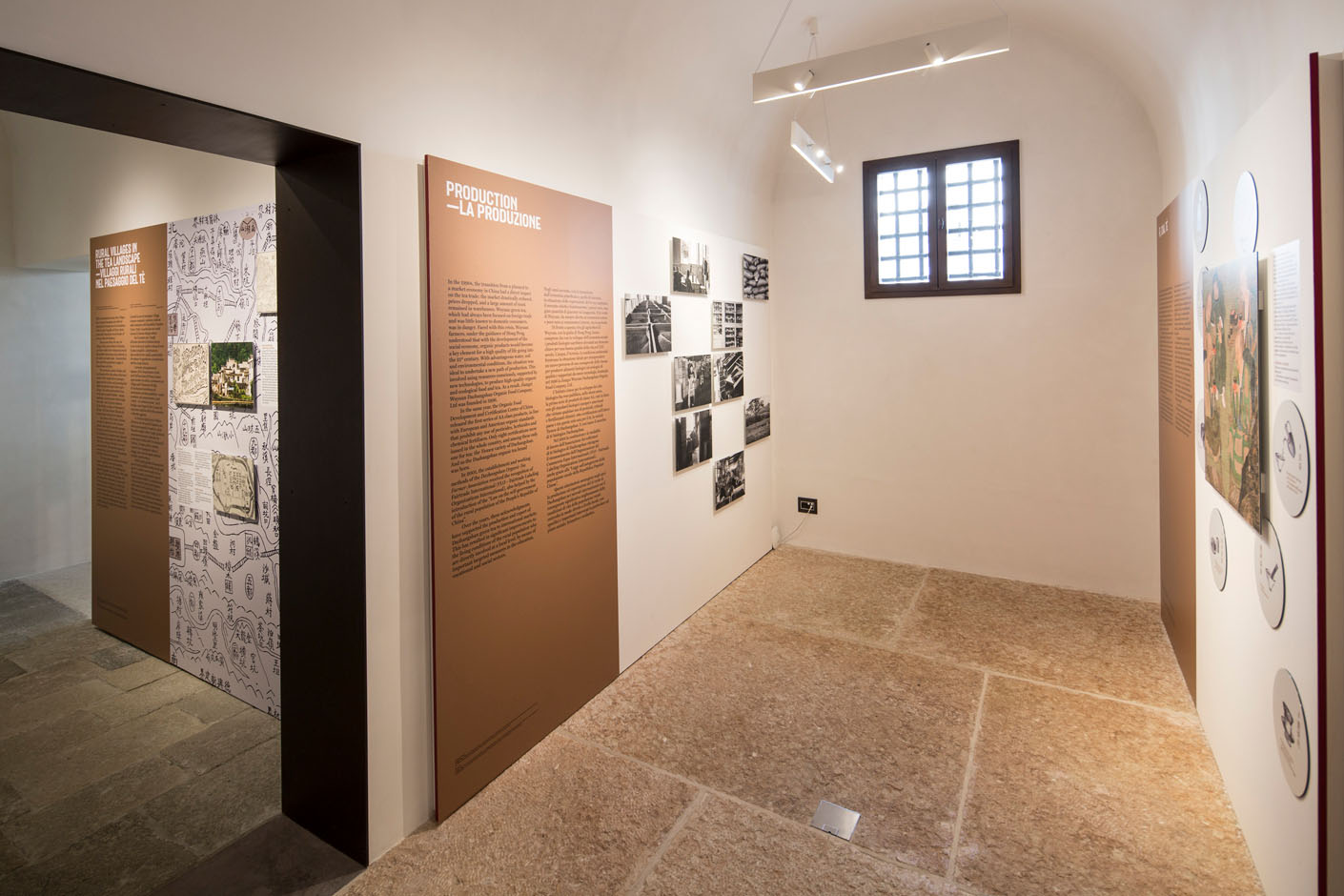Exhibition
The Ground We Have in Common
The Ground We Have in Common is an exhibition born from the collaboration between Gallerie delle Prigioni and Fondazione Benetton Studi Ricerche, and features the tea gardens of Dazhangshan in China, winners of the 30th edition of the International Carlo Scarpa Prize for the Garden. The exhibition is hosted for the first time in the spaces of Gallerie delle Prigioni, and combines the documentary part with works of contemporary art.
curated by
Patrizia Boschiero (Fondazione Benetton)
Nicolas Vamvouklis (Fondazione Imago Mundi)
Discover more
Beginning with an exploration of the landscape of Dazhangshan’s tea gardens, the exhibition itinerary highlights the geographical and architectural context of an area that is historically the heart of tea plant cultivation. In the farms of Dazhangshan, in the county of Wuyuan, more than 250 families of farmers cultivate tea plants according to the principles of organic farming, keeping alive a place where the close relationship between the landscape and those who derive their livelihoods from it, ensures the continuity of cultural traditions and aesthetic values, in conditions of balance between man and nature. These are the themes explored in the documentary created specifically for this edition of the Prize.
The Ground We Have in Common retraces ideas and themes that have crossed some of the previous editions of the Prize, combining artistic research and landscape investigation, the exhibition winds through contributions of different nature and explores the languages chosen by contemporary artists who investigate the notion of the garden in a broad sense, and that of the care of the earth.
A selection of works relates to the essential themes of the Carlo Scarpa Prize through different keys of interpretation. History and memory are the lenses through which to observe the symbiotic relationship between mankind and the natural environment, allowing questions to emerge regarding the protection of the latter on the one hand and the instances of renewal on the other. The investigation then dwells on the role that trade and exchange have in determining the way we experience the contexts that surround us. This idea is explored in Susan Hiller’s sound work, inspired by Mendel’s theories on the transmission of hereditary traits, while Petros Efstathiadis’ photographs express a complex relationship with one’s place of origin, an experience that is strongly linked to the artist’s local context and which, at the same time, represents a universally shared experience.
Another theme present in the selection of works is the physicality of natural elements. Fruits, leaves and seeds are the raw materials that compose Christiane Löhr’s delicate natural architectures, while wood is the medium for the perception of sound in Michele Spanghero’s work, and, again, there is clay, which gives shape to William Cobbing’s creation commissioned specifically for the exhibition. These materials are a tribute to the manual and theoretical skills necessary to transform the landscape and to transmit the knowledge of the shared care of the earth and the environment from the local to the global context.
Inauguration Video
11 May / 1 September 2019
Gallerie delle Prigioni - Treviso
curated by
Patrizia Boschiero (Fondazione Benetton)
Nicolas Vamvouklis (Fondazione Imago Mundi)
































